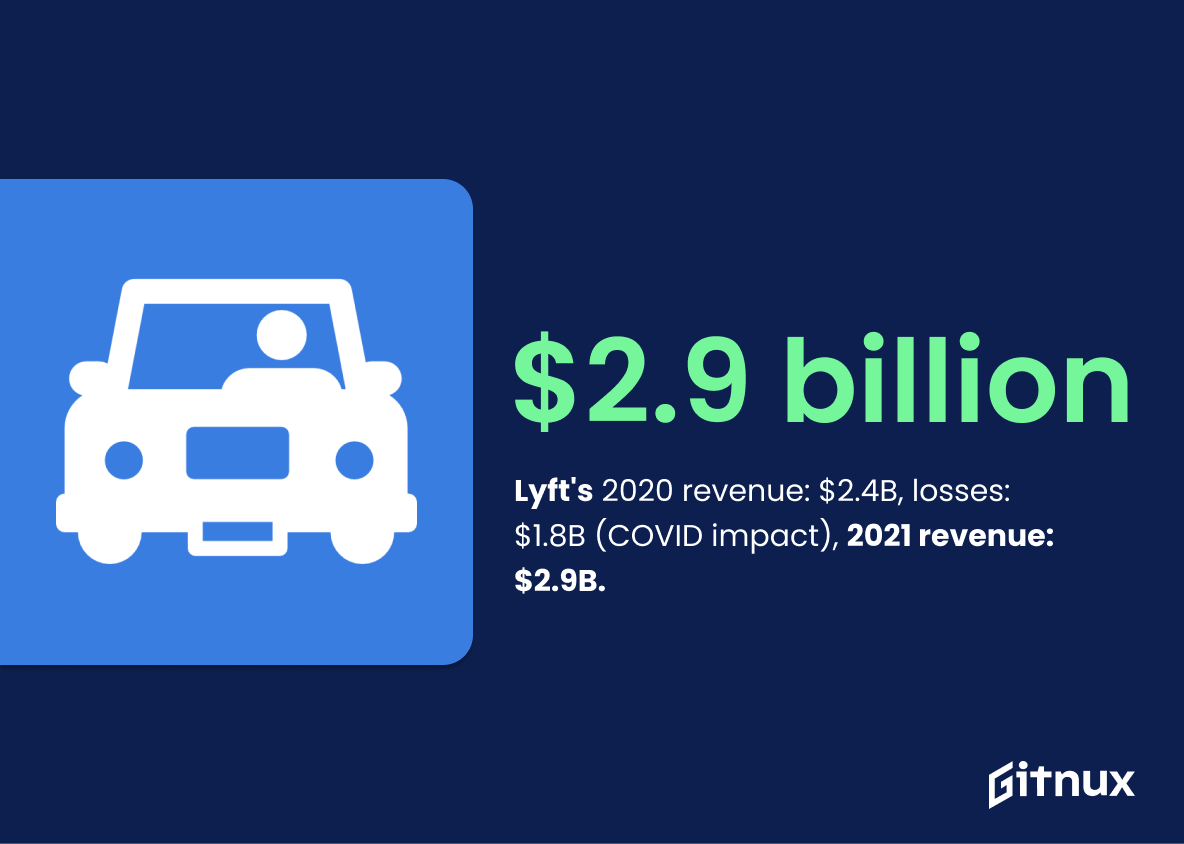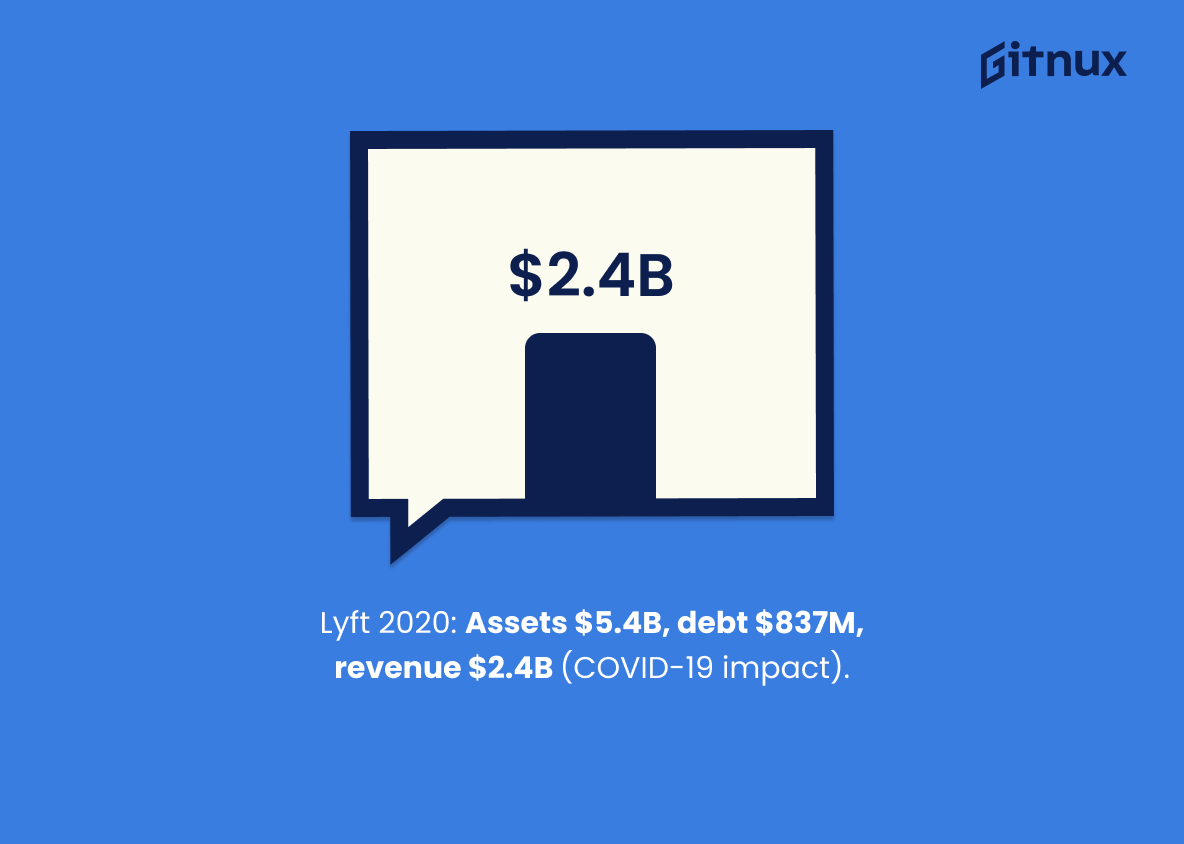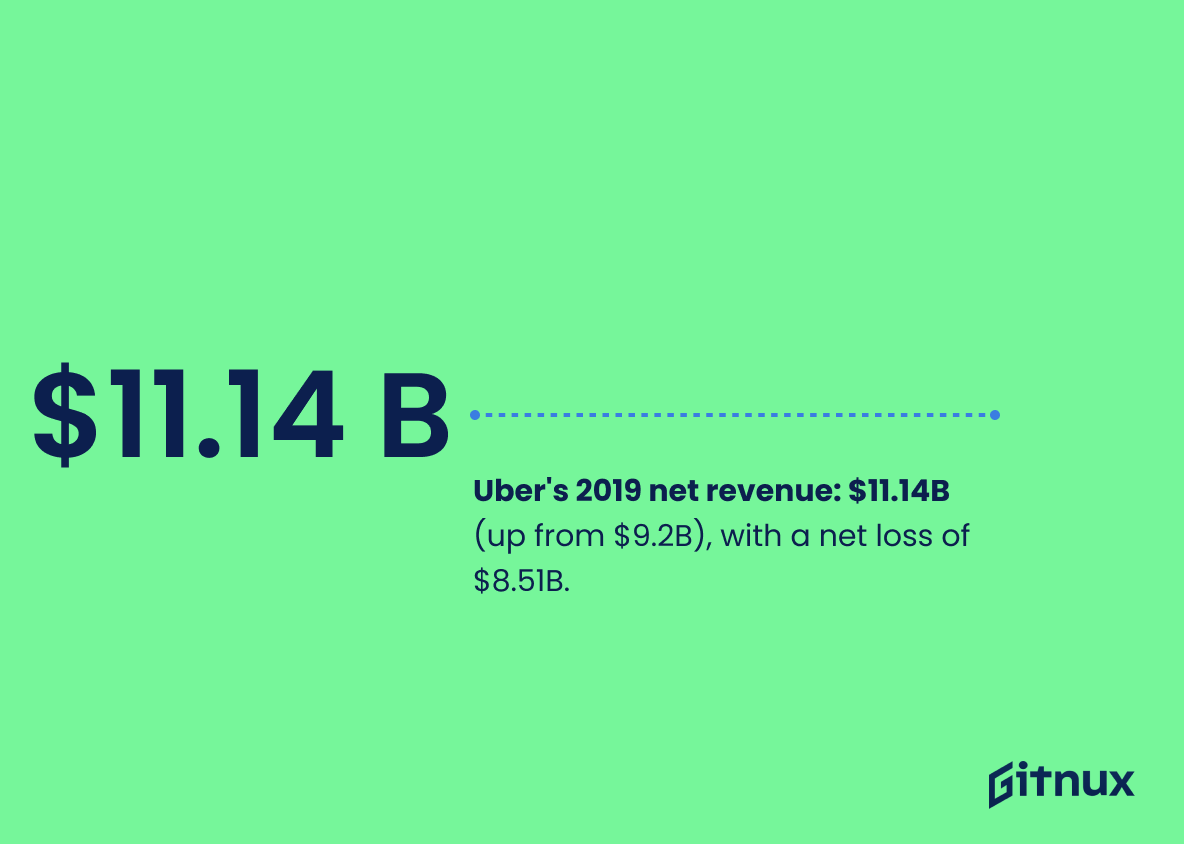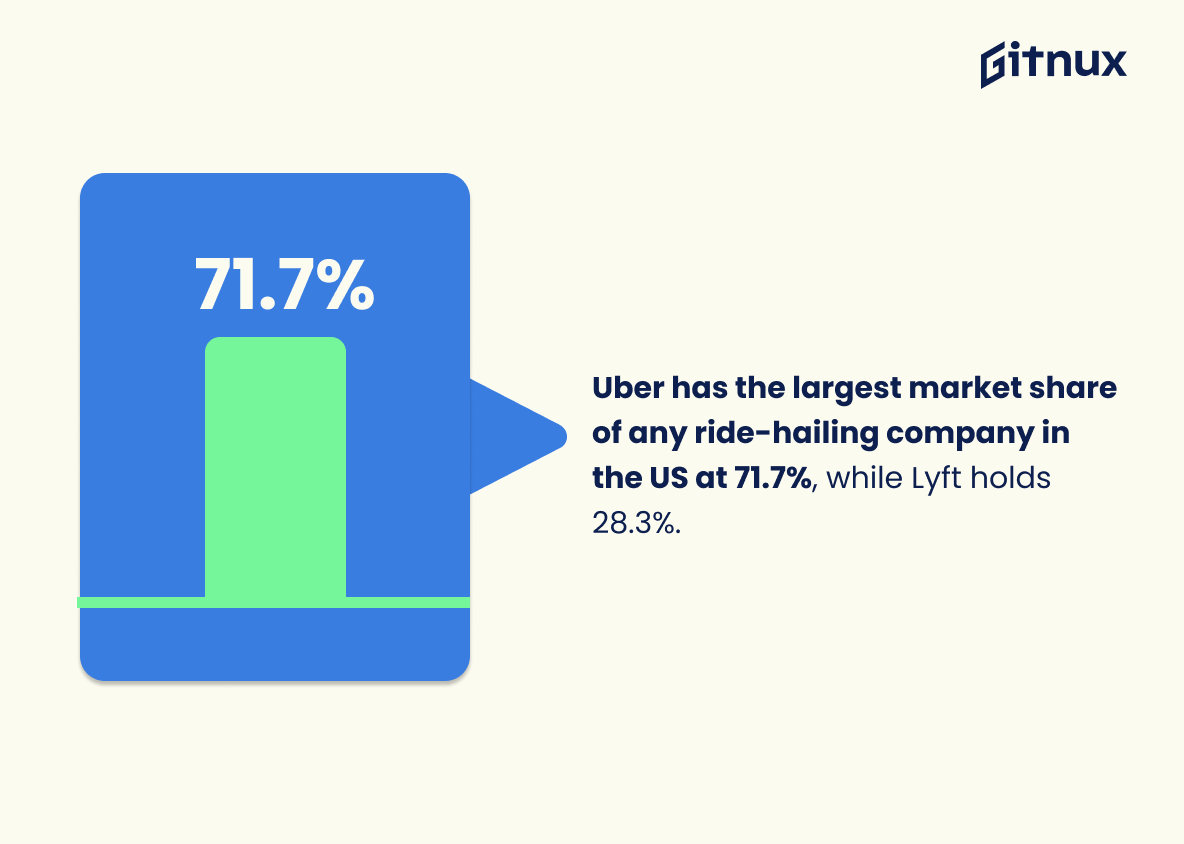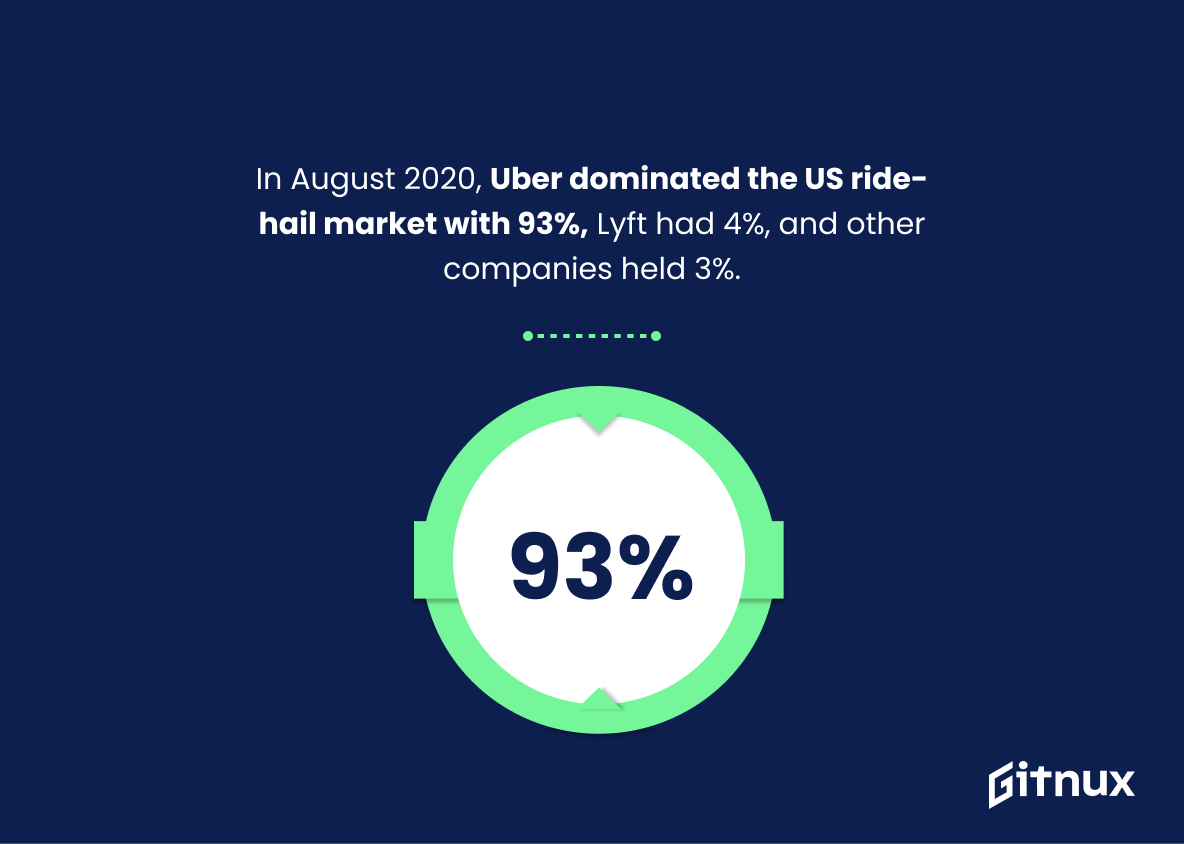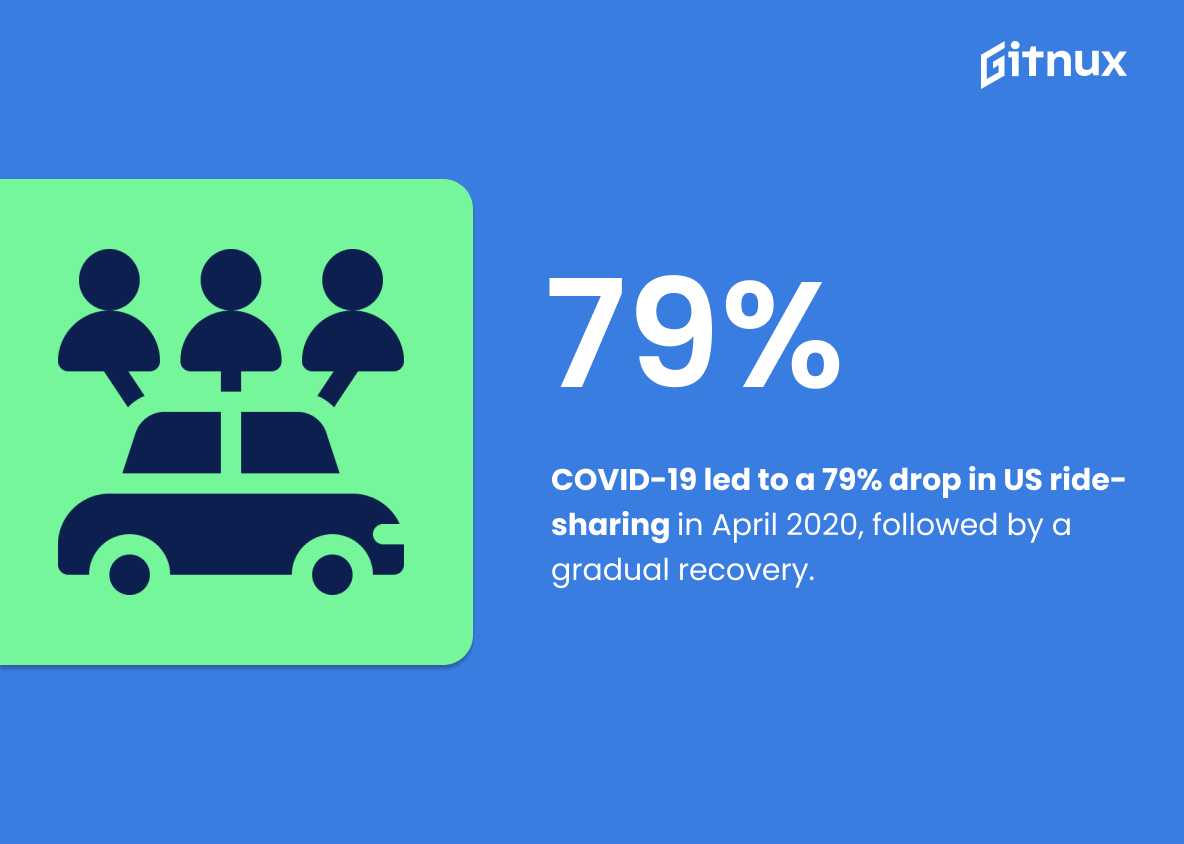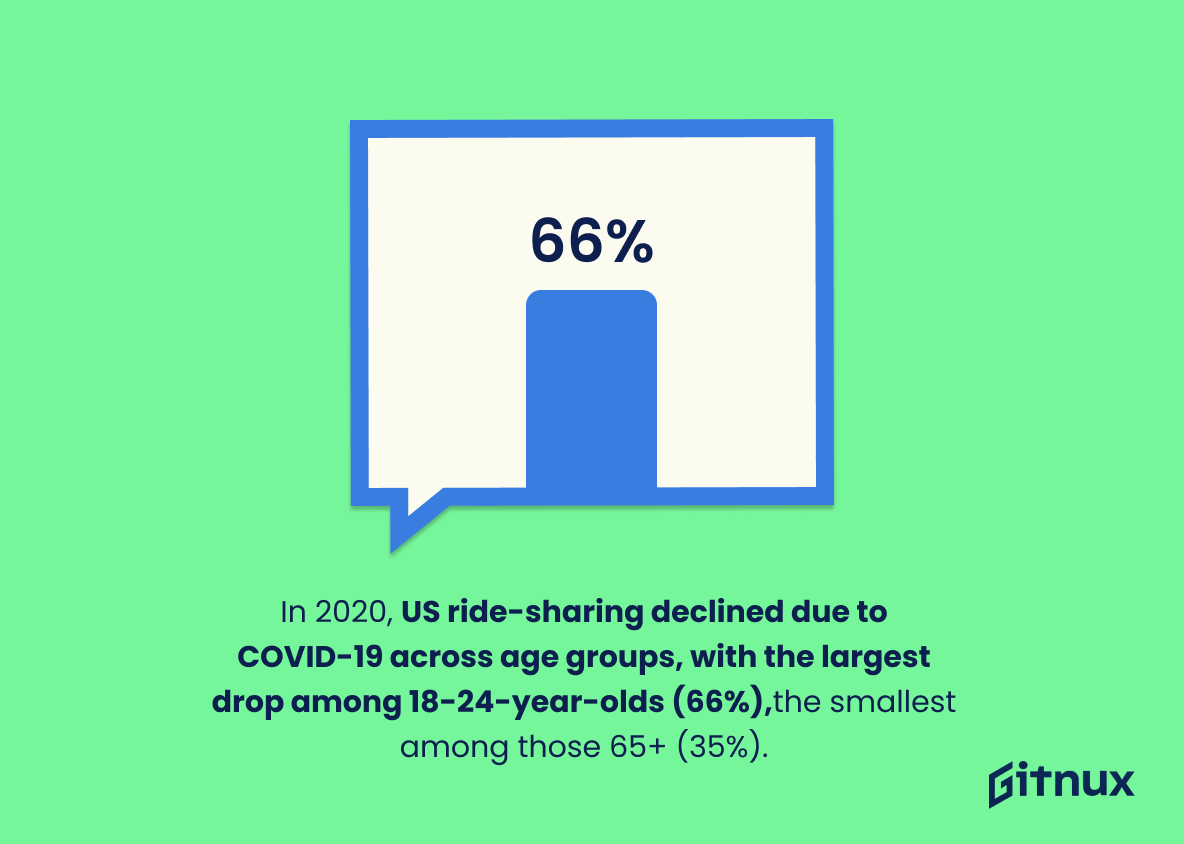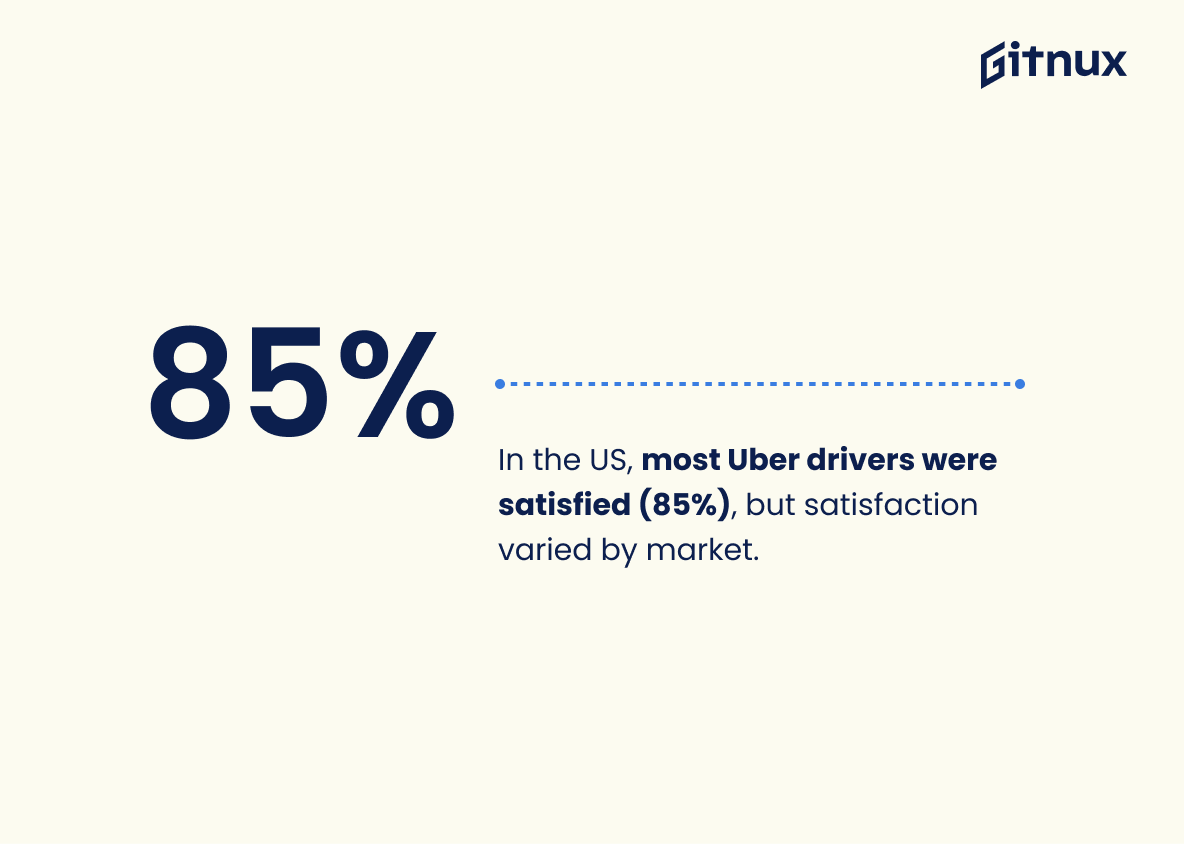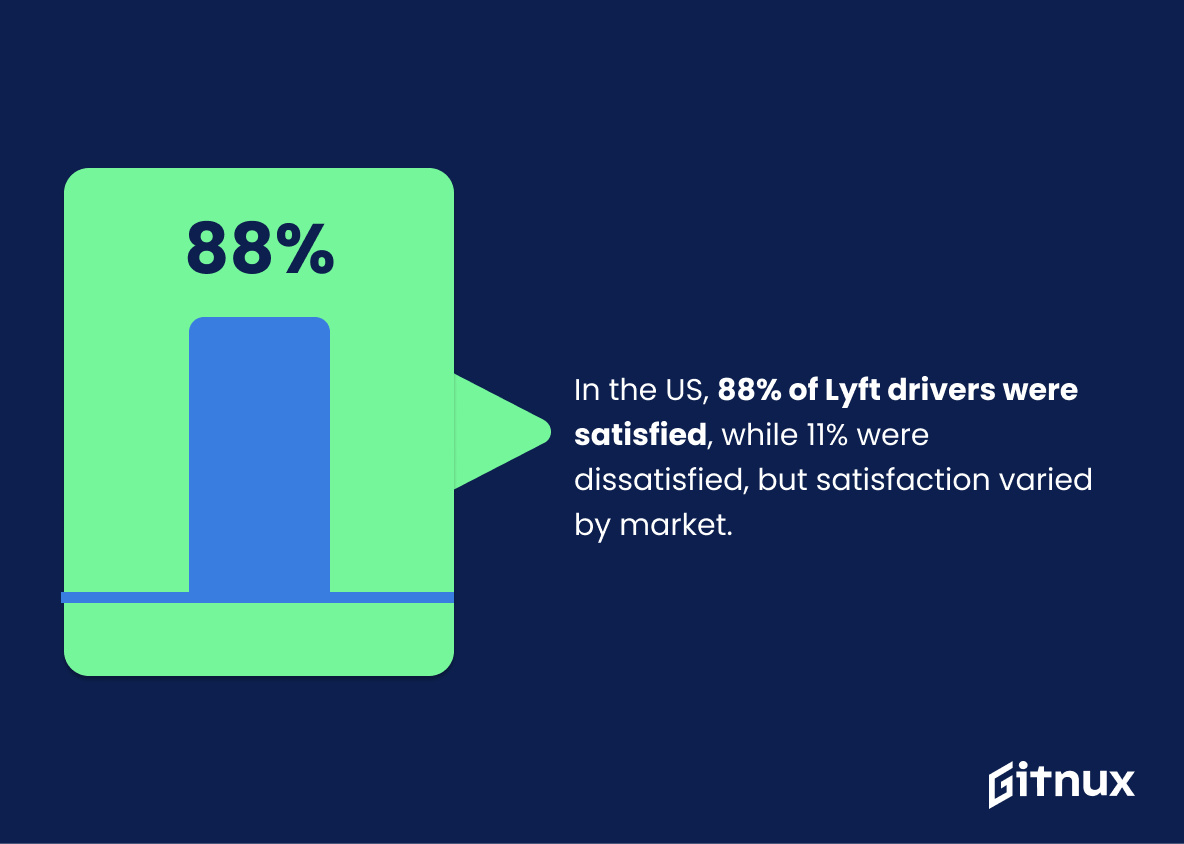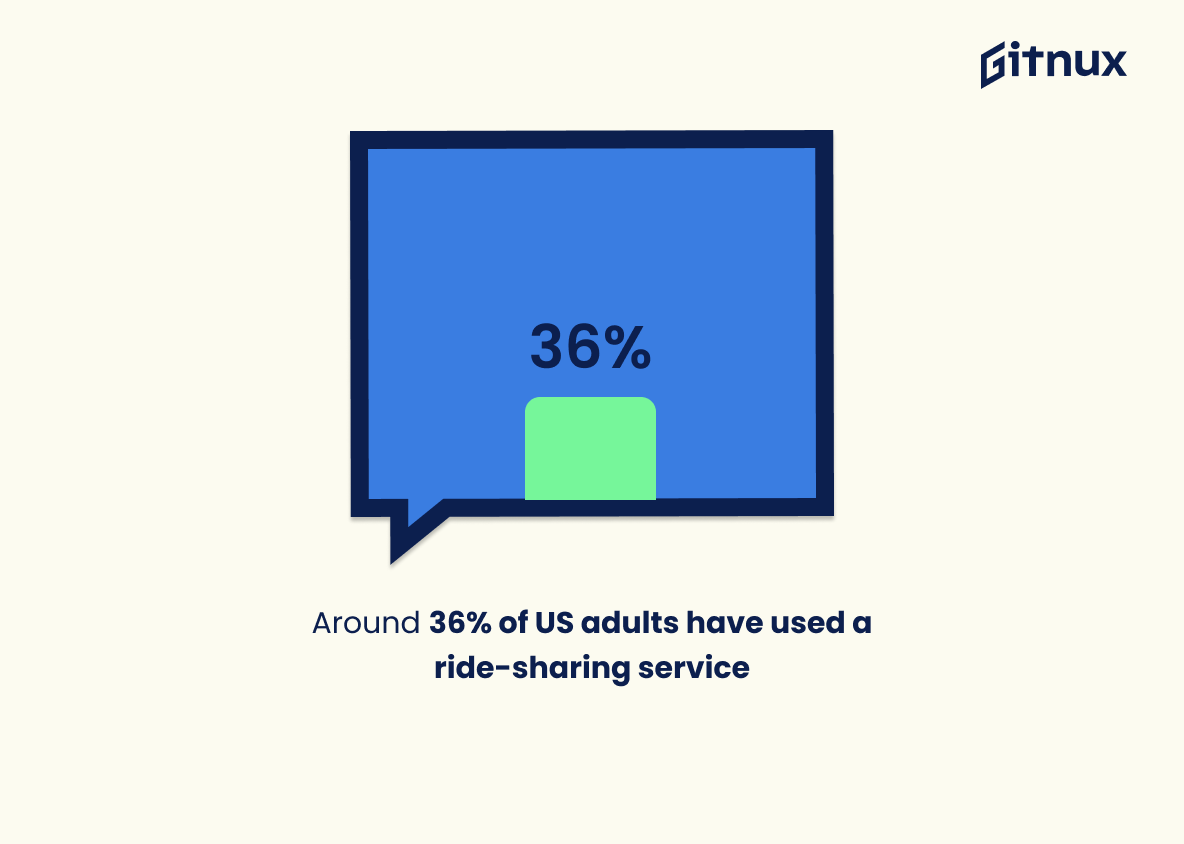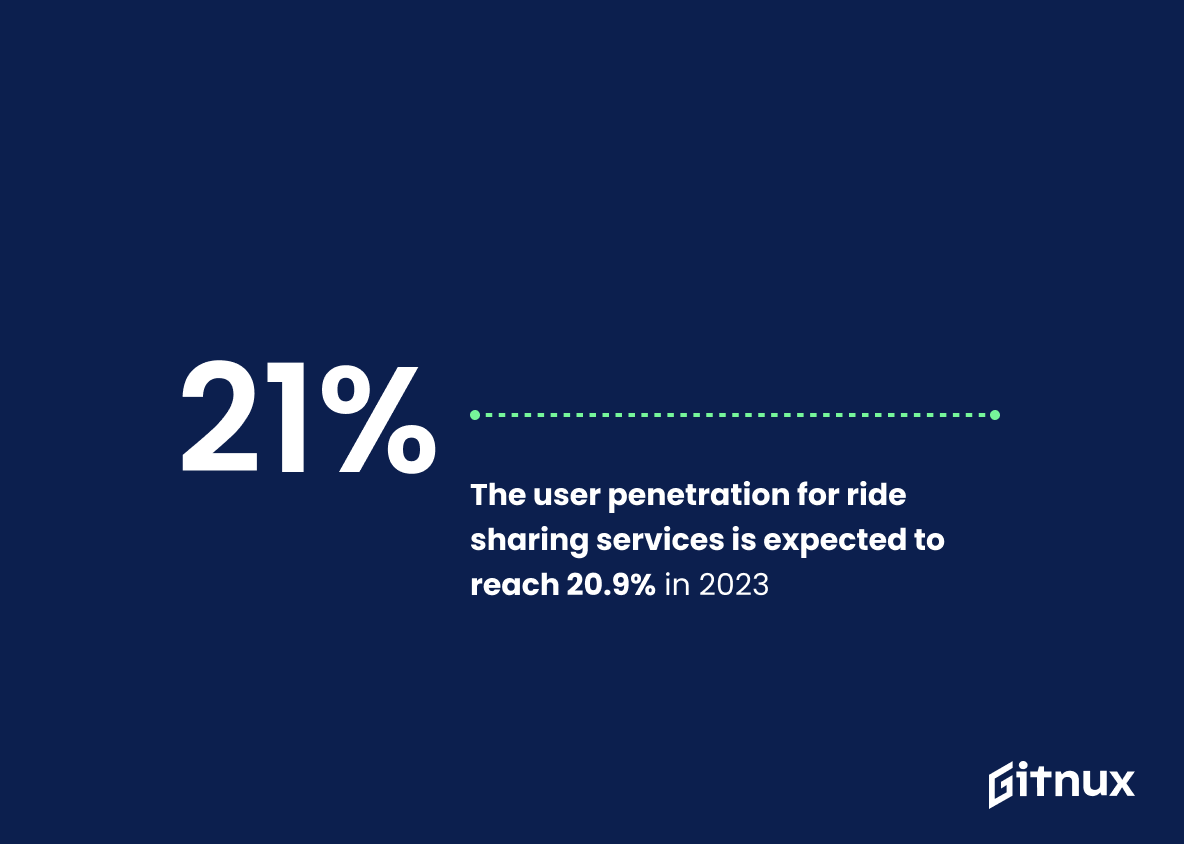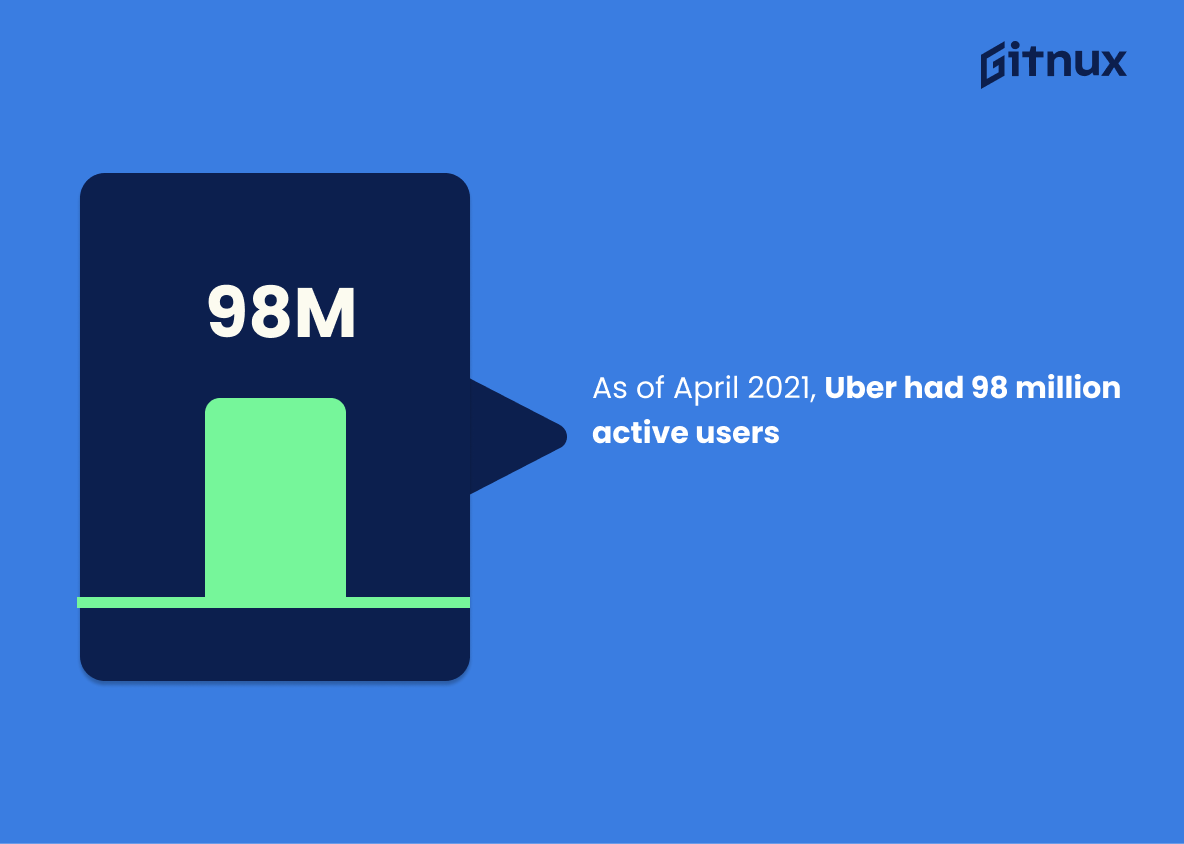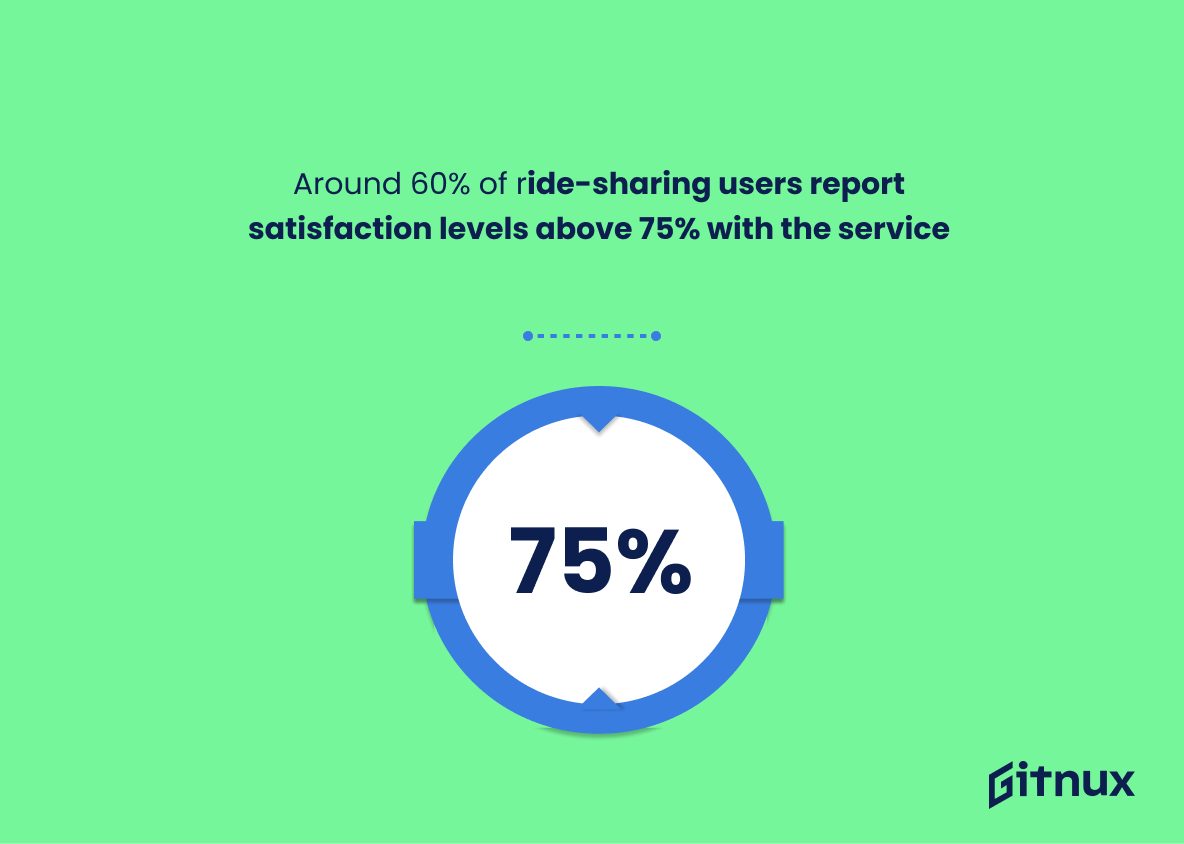The ride-sharing industry has grown exponentially in recent years, and it’s no surprise that it’s become a major part of the transportation landscape. But what do the numbers say?
In this blog post, we’ll take a look at some of the most interesting ride-sharing statistics and explore the implications of these figures for the industry. We’ll also discuss the potential impact of ride-sharing on the environment, public safety, and the economy. So, buckle up and let’s take a ride through the world of ride-sharing statistics.
Ride Sharing: The Most Important Statistics
Uber had 93% of ride-hailing drivers in the US in August 2020, while Lyft had only 4%, with the remaining 3% being other ride-hailing companies.
Ride-sharing services usage decreased across all age groups in the US in 2020 due to the COVID-19 pandemic, with the greatest decrease among 18-24 year olds (66%) and the smallest decrease among 65+ year olds (35%).
Ride Sharing Statistics Overview
In 2020, Lyft’s net revenue decreased from $3.6 billion to $2.4 billion, net loss decreased from $2.6 billion to $1.8 billion, and active riders decreased from 21.8 million to 12.6 million due to the COVID-19 pandemic. In 2021, net revenue increased to $2.9 billion.
Despite the decrease in active riders, Lyft was able to increase their net revenue and decrease their net loss in 2021. This indicates that the company was able to adjust to the changing market conditions and remain profitable.
Lyft’s total assets increased from $3.6 billion in 2019 to $5.4 billion in 2020, while long-term debt increased from $747 million to $837 million. Revenue decreased from $3.6 billion in 2019 to $2.4 billion in 2020 due to the COVID-19 pandemic.
This shows the impact of the COVID-19 pandemic on the ride-sharing industry. Despite the decrease in revenue, Lyft was able to increase its total assets and long-term debt, indicating that the company was able to remain financially stable during the pandemic.
Uber’s global net revenue increased from $9.2 billion in 2018 to $11.14 billion in 2019, but the company also had a net loss of $8.51 billion.
Uber had a net income of -$6.77 billion in 2020, a decrease from -$8.51 billion in 2019.
Thus, Uber is making progress towards profitability, but has not yet achieved it. This is important for investors and stakeholders to understand, as it can affect their decisions about investing in the company.
Uber has the largest market share of any ride-hailing company in the US at 71.7%, while Lyft holds 28.3%.
This shows the dominance of Uber in the US ride-hailing market, and the relative decline of Lyft.
Uber had 93% of ride-hailing drivers in the US in August 2020, while Lyft had only 4%, with the remaining 3% being other ride-hailing companies.
This indicates that Uber is the most popular choice for drivers and customers, making it the most successful ride-hailing company in the US.
The COVID-19 pandemic caused a 79% decrease in ride-sharing use in the United States in April 2020 compared to the previous year, with a gradual recovery throughout the year.
This highlights the need for ride-sharing companies to adjust their business models in order to remain competitive and profitable during the pandemic. It also shows that the industry is resilient and can recover from the pandemic, albeit slowly.
Ride-sharing services usage decreased across all age groups in the US in 2020 due to the COVID-19 pandemic, with the greatest decrease among 18-24 year olds (66%) and the smallest decrease among 65+ year olds (35%).
This demonstrates how the pandemic has impacted different age groups differently, and how this could influence the future of ride-sharing services in the US.
Overall, Uber drivers in the US were mostly satisfied (85%), but there was significant variation in satisfaction levels between markets.
Therefore, Uber needs to focus on improving customer satisfaction in certain markets in order to ensure that drivers are happy and willing to continue working for the company.
Overall, 88% of Lyft drivers in the US were satisfied with the company, with only 11% dissatisfied; however, satisfaction levels varied significantly by market.
Supplementary Statistics
Global ride sharing market is expected to reach $220.5 Billion by 2025
The industry is growing rapidly and is expected to reach a staggering $220.5 Billion by 2025. This is a clear indication that ride sharing is becoming an increasingly popular and profitable option for businesses and consumers alike. It is a great opportunity for those looking to invest in the ride sharing industry and a great source of information for those looking to learn more about the industry.
North America dominates the ride sharing market, accounting for 35% of total revenue in 2021
It is a clear indication that ride sharing is a lucrative business in the region, and a reminder of the potential for further growth. This is an important point to consider when discussing the overall ride sharing market, and its implications for the future.
Around 36% of US adults have used a ride-sharing service
It shows that a significant portion of the population has embraced this new form of transportation, demonstrating its potential to revolutionize the way people get around.
The user penetration for ride sharing services is expected to reach 20.9% in 2023
This speaks to the increasing popularity of this mode of transportation, and the potential for it to become a more widely used service in the coming years. This statistic is an important factor to consider when discussing the current and future state of ride sharing services.
As of April 2021, Uber had 98 million active users
This is a testament to the success of Uber’s ride-sharing services, demonstrating that the company has been able to capture a large portion of the market. It also serves as a reminder of the potential of ride-sharing services to revolutionize the way people travel, as 98 million active users is a significant number.
Around 60% of ride-sharing users report satisfaction levels above 75% with the service
Ride-sharing is a reliable and convenient way to get around. This is an important point to make in a blog post about ride-sharing statistics, as it shows that the service is worth investing in.
It is estimated that the average ride-sharing user spends $57 per month on the service
Thus, ride-sharing is becoming an increasingly popular and affordable option for commuters, with the average user spending just $57 per month. This statistic is a testament to the convenience and cost-effectiveness of ride-sharing services, and is an important factor to consider when discussing the overall success of the industry.
As of 2020, Lyft had 22.9 million active users in the United States
It is a clear indication that the ride-sharing industry is thriving and that Lyft is a major player in the market. This statistic is an important piece of information for anyone looking to gain insight into the ride-sharing industry and its current state.
In 2019, the global ride sharing market was valued at $85.8 billion
This highlights the immense potential of the industry and the opportunities it presents for businesses and consumers alike. It also serves as a reminder of the importance of staying up-to-date with the latest trends and developments in the ride sharing industry in order to remain competitive.
Approximately 69% of ride-sharing users prioritize price when choosing a service
The majority of users prioritize cost when selecting a service, meaning that companies must be competitive in their pricing in order to attract and retain customers. This is an essential factor to consider when discussing ride-sharing statistics, as it can have a major impact on the success of a business.
As of October 2020, Didi Chuxing was valued at $62 billion
It serves as a reminder of the potential of the ride-sharing industry and the potential for growth in the future. It also serves as a benchmark for other ride-sharing companies to strive for.
Access to ride-sharing reduces the rate of drunk driving-related fatal accidents by as much as 6.1%
By providing an alternative to driving under the influence, ride-sharing can help to reduce the number of fatal accidents caused by drunk driving, potentially saving countless lives. This statistic is an important reminder of the importance of ride-sharing in keeping our roads safe.
In 2020, 84% of the total revenue generated by Uber came from its ride-sharing segment
It is a clear indication that ride-sharing is a lucrative business and that Uber is a major player in the industry. This statistic is an important piece of information for anyone interested in learning more about the ride-sharing industry and its impact on the economy.
Conclusion
In conclusion, ride sharing has become an increasingly popular form of transportation in recent years. It has a number of advantages over traditional forms of transportation, including convenience, cost savings, and environmental benefits.
The statistics show that ride sharing is becoming increasingly popular and is likely to continue to grow in the future. It is an important part of the transportation landscape and will continue to shape the way we travel in the years to come.
References
1 – https://www.statista.com/statistics/858206/lyft-global-net-revenue/
2 – https://www.statista.com/statistics/995253/lyft-total-assets/
3 – https://www.statista.com/statistics/550635/uber-global-net-revenue/
4 – https://www.statista.com/statistics/995335/uber-net-income/
5 – https://www.statista.com/statistics/910704/market-share-of-rideshare-companies-united-states/
6 – https://www.statista.com/statistics/829107/market-share-of-rideshare-drivers-us/
7 – https://www.statista.com/statistics/1139429/ride-sharing-services-united-states-covid19/
8 – https://www.statista.com/statistics/1139444/ride-sharing-services-usage-age-united-states-covid19/
9 – https://www.statista.com/statistics/827966/driver-satisfaction-with-uber-us/
10 – https://www.statista.com/statistics/828585/driver-satisfaction-with-lyft-us/
11 – https://www.mckinsey.com
12 – https://www.technavio.com
13 – https://investor.uber.com
14 – https://www.grandviewresearch.com
15 – https://www.statista.com
16 – https://www.researchandmarkets.com
17 – https://www.nber.org
18 – https://techjury.net
19 – https://pitchbook.com
